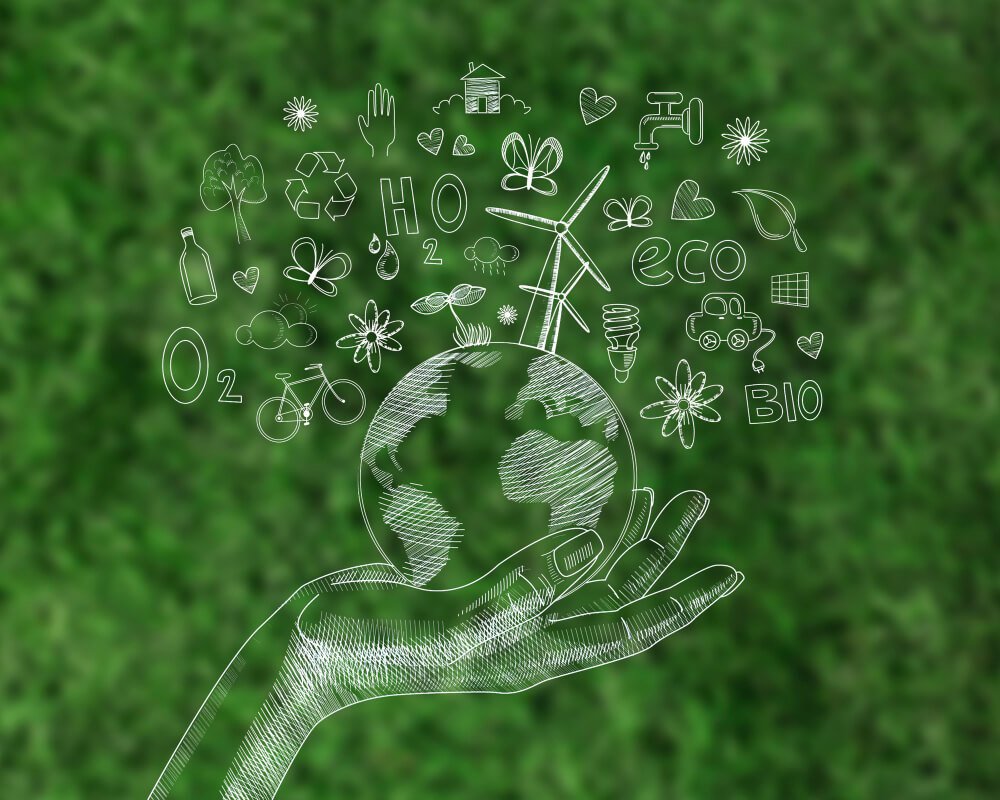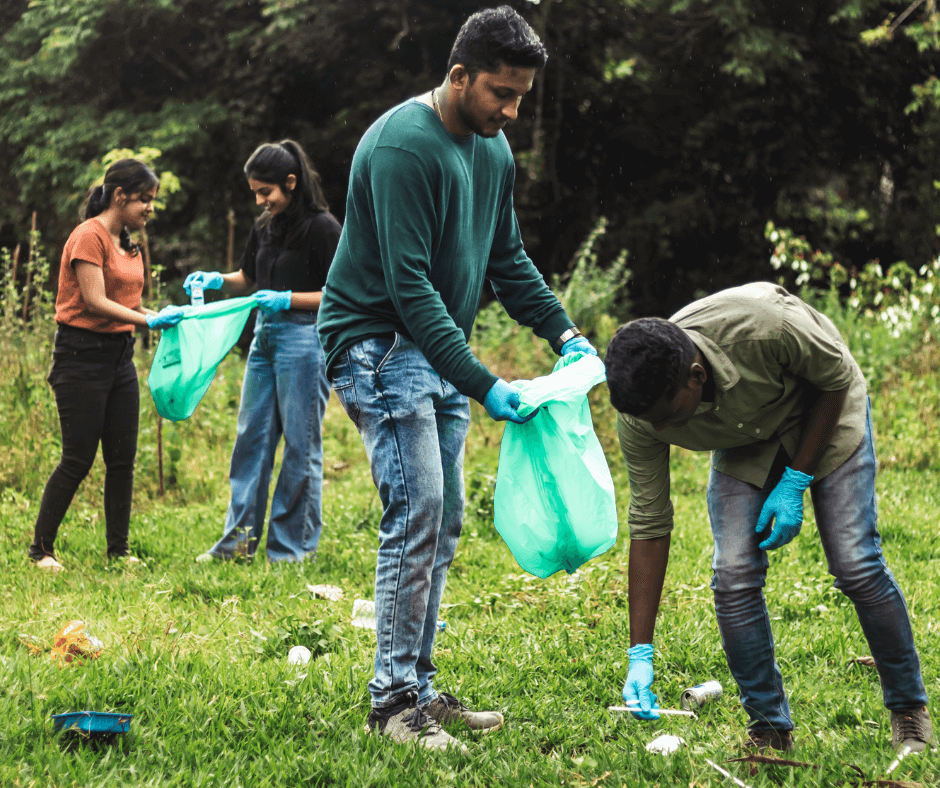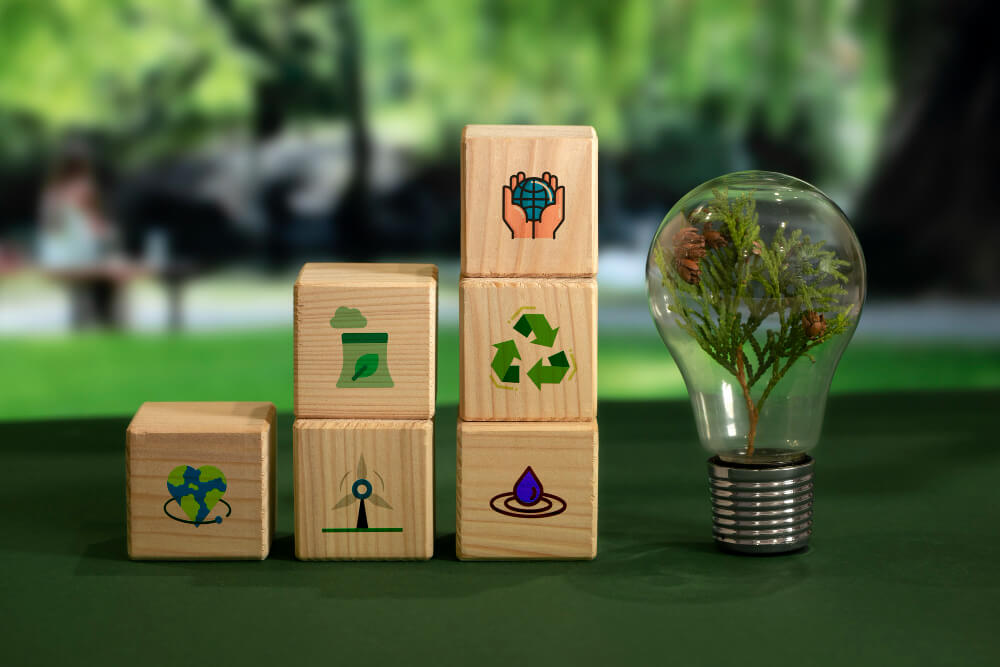Sustainable fashion brands, sustainable travel, and tourism, or sustainability in manufacturing…ever thought about the meaning of sustainable living that encompasses all these aspects? Is it even important to think about this?
Yes. It is imperative to know and understand how to achieve sustainability in most if not all things we do.
“The earth is a fine place and worth fighting for and I hate very much to leave it”– Ernest Hemingway.1
How many of us agree with Ernest Hemingway?
I love quotes. I’m constantly in awe of people who can convey such powerful messages succinctly!
As we deplete more and more of earth’s resources, it will cease to be a “fine” place at some point. Sustainable living is one way to curb this.
It is therefore vital to really know the meaning of sustainable living. The benefits of doing so go beyond environmental impact and extend to a more fulfilling life for all of us.

What is sustainable living?
I’m not an expert. I am an enthusiastic learner who wants to share her learnings.
Let us, therefore, understand the meaning of sustainable living or lifestyle from the experts at the UN environment program.
Their framework for shaping sustainable lifestyles uses this definition.
“A “sustainable lifestyle” is a cluster of habits and patterns of behaviour embedded in a society and facilitated by institutions, norms and infrastructures that frame individual choice, in order to minimize the use of natural resources and generation of wastes, while supporting fairness and prosperity for all.”
Sustainable living needs all of us as a global society to rethink our habits. This could be our usage of natural resources, how much waste we generate, and everyday activities such as dry and wet waste segregation.
While our governments and inter-governmental organizations are responsible for formulating enduring environmental strategies for sustainable development, the onus is on us to help them achieve the objectives.
One cannot happen without the other.
Why is sustainable living important?
Earth is a generous host for human beings. She does have her limitations, though.
All the human activities such as continuing to meet our energy need through fossil fuels, polluting our environment at the cost of our own lives, and not doing enough despite knowing the dangers, take a toll.
A few things for us to consider:
- Extraction and thereby depletion of natural resources have gone up significantly, as much as 3 times in the past few decades.
- We are not exactly on track to meet the target of keeping global warming to an ideal 1.5 degrees or at least below 2 degrees. This is according to the UNEP Emissions Gap Report of 2022.
- We waste one-third of our food, about 1.3 billion tons.
- Remember the 100 years later question from earlier? We may not have much forest cover left by that time because of deforestation.
“Isn’t it funny how day by day nothing changes, but when you look back, everything is different”–C. S. Lewis.
True, right? This is where understanding the meaning of sustainable living and practicing it as far as possible becomes important.

Is sustainable the same as eco-friendly? and what are eco-friendly products, anyway?
The term eco-friendly applies to anything that is earth-friendly. In other words, less or no harm is done to our planet by making or using them.
Sustainability, on the other hand, focuses on making do with less so that we do not deplete our resources to an extent where there’s not much left in the future. This is about maintaining ecological balance.
People say that there are differences between the two terms. I feel they are connected.
If today we practice eco-friendliness by buying products that don’t cause damage to our environment or by repurposing what we have, then we save that many raw materials for future use.
Our lifestyles are a product of, among other things, our values, social interactions, income, and where we live. Bringing about a change therefore must consider social, economic, and environmental factors.
Sustainability is a principle. Sustainable living is a means and we need all-around development for it.
That brings us to getting to know the pillars of sustainable development. First, though, we have to know what sustainable development is.
What does sustainable development mean?
Curious to know who defined the term sustainable development and how? Towards the end of 1983, the UN general assembly asked former Norwegian Prime Minister Gro Harlem Brundtland to establish an independent commission.
This commission was tasked with framing “A global agenda for change”, which, among other things, included finding ways for the international community to deal with environmental issues via greater cooperation between countries.
It took a while, but the commission released a report titled “Our Common Future”. The document defines sustainable development as:
“Sustainable development is development that meets the needs of the present without compromising the ability of future generations to meet their own needs.”
The implication here is more from a policy or national/institutional governance and developmental activities point. However, it cannot be isolated from the people or society for whom these policies they put in place.
From an individual standpoint, this could mean that we need to think ahead or rethink our current situation by asking ourselves questions like how to reduce energy consumption or whether we can take a pledge toward the prevention of food wastage.
Although I don’t know if people still ask, “Where do you see yourself 10 years down the line?” during interviews, we should perhaps still be asking ourselves “Where do we see humankind living 100 years from now?”. Not during interviews, of course, 😊.

What are the pillars of sustainable development?
Our CV or resume includes a list of both hard and soft skills that can be seen as the building blocks which paved the path to achievements.
Similarly, along with appropriate technology for sustainable living, we also have the following “pillars of sustainable development” as a pathway to progress:
- Social
- Economic
- Environmental
This concept seems to have developed over a period of time through the works of several people and is not coined or defined by an individual or organization.
Regardless, it is widely accepted as being the central driving force in sustainable development initiatives.
All three pillars are interconnected. For instance, there is poverty in many countries, including India. There are still people who do not get timely and adequate health care – something that is their basic right. Although steady progress has been made, there is still a lot left to be done.
These are social inequalities that are linked to a lack of economic sustainability. There is a disparity in equal access to resources and opportunities, such as education and jobs.
Till these are addressed, we cannot hope for environmental sustainability.
“Only if we understand, will we care. Only if we care, will we help. Only if we help, shall all be saved.” — Jane Goodall.2
Let us think through an example of how these pillars are interlinked.
For that, we will head next toward one of the sustainability pillars that involves all of us – Social Sustainability and the premise of social innovation for sustainable living.
What is social innovation for sustainable living?
According to an OECD publication, “Social innovation refers to the design and implementation of new solutions that imply conceptual, process, product, or organisational change, which ultimately aim to improve the welfare and wellbeing of individuals and communities.”
This pillar of sustainability is about us, as people and society. If we, as individuals, communities, and companies, take an interest in common social challenges, then it brings about a wide-ranging improvement in our society.
This could be in the form of new or innovative solutions to small or big problems. It could also take the shape of supporting such initiatives by participating in them.
Crowdfunding platforms can be a good example. They assist people in obtaining funding for multiple causes such as medical expenditures or even social change initiatives. Impact Guru and Ketto are a couple of platforms that support such activities.
Carpooling was at one point an innovative concept. It can become a popular means of getting to and from places if people see the benefits. I could see this as an example of ideas for sustainable living.
The purpose behind this initiative could be different, but it does have a positive environmental impact. It is two or three fewer people driving or riding to their destination, which means less fuel used and less pollution caused.
Having said that, I also know that we don’t have the right infrastructure in place as of now in many places. If we want to dissuade people from buying or using their vehicles extensively, then public transport facilities and connectivity need improvement.
It is easy to say take a bus or the metro, but difficult when the bus stop is 2-3 km away from our house or when there is no direct route to our destination.
Institutions, be they governmental or private, also have their role to play in social sustainability. In fact, I would say they have a big role to play.
Hopefully, things will get better with time.
“Environmental problems are really social problems anyway. They begin with people as the cause and end with people as the victims”. – Edmund Hillary.3
So far, we’ve covered what sustainable living and development mean. We’ve also discussed the pillars or pathways to sustainability.
As with anything else in life, concepts remain as concepts or frameworks until we plan goals to formalize these concepts.

What are India’s sustainable goals?
Our goals are aligned with that of the world, which forms the 2030 agenda. The UN General Assembly members adopted these in 2015. They came into effect in 2016.
What are these goals? There are 17 SDGs or sustainable development goals that cover a range of things, some of which we’ve briefly touched upon. No poverty, good health and well-being, reduced inequalities, etc.
Our goals are no different, but our challenges in meeting them might vary from other countries. The NITI Aayog’s SDG vertical is responsible for monitoring progress. They work with local governments and the private sector to ensure progress.
How India is faring in its journey towards sustainability can be understood through the SDG India Index and Dashboard. This gives us state-wise progress against multi-part targets.
Contributions to meeting our country’s sustainable goals can take any form. Are we already helping this cause in some way? Think about:
- Any instances of participation in Corporate Social Responsibility events. E.g., planting saplings or clean-up drives
- Hobbies such as gardening, DIY projects such as painting old containers or bottles that then become vases or pen holders
- Holding onto chocolate wrappers, coffee or food takeaway containers till there’s a dustbin available for disposal
- Opting to meet your friends at a common point and travel together to reach a destination
- Sharing or liking a social media post that endorses sustainable activities.
If the answer to even 1 or 2 points on this list is yes, then that’s a start.
Without thinking much, i.e., subconsciously, we are in our own way taking part in this journey. We can achieve much more by taking mindful steps.
“For us, protection of environment is an article of faith. We have natural resources because our previous generations protected these resources. We must do the same for our future generations.” – Narendra Modi.4
Bringing things to a conclusion
Asking the right questions is a good way to learn. The 5 main questions here are all about powerful facts.
What makes them powerful? Knowledge is power. Knowledge is also an ingredient to any change efforts. Unless we know what is going well and what isn’t, we can’t fix gaps or improve upon those that already exist.
The questions in this blog post might raise more or help provide ideas. The answers we found today have the power to influence our thoughts, actions, and decisions. If we let them.
So, what are your sustainable goals? What has worked for others out there that I should be aware of? Do let me know, as learning never stops.